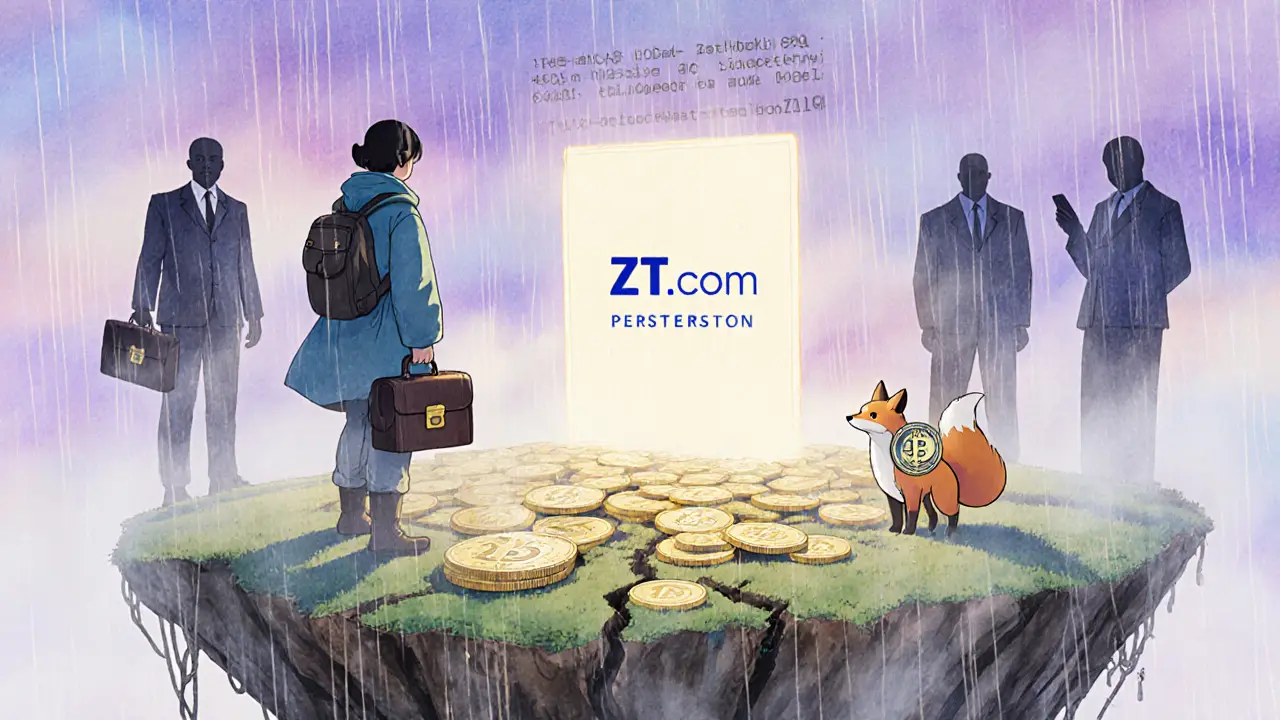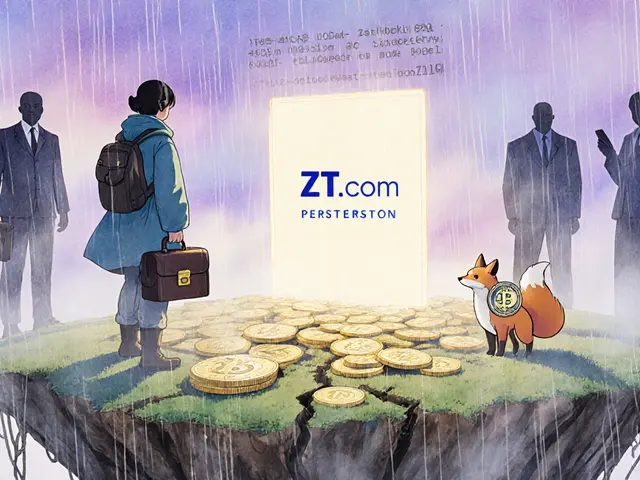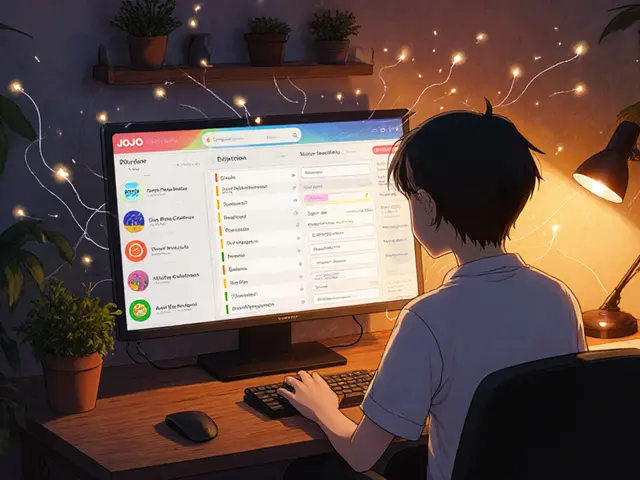ZT Exchange Risk Assessment Tool
Assess Your Risk Level with ZT Exchange
Answer these questions to determine your personal risk level. ZT Exchange has significant security and verification issues that may affect your funds.
Is ZT Exchange safe to use in 2025? If you’ve seen ads promising low fees, 1:100 leverage, and global access, you’re not alone. But behind the flashy claims, users are reporting locked accounts, missing verification codes, and customer support that never replies. This isn’t just another crypto exchange review-it’s a reality check for anyone considering ZT.com.
What Is ZT Exchange?
ZT Exchange, operating as ZT.com, is a centralized crypto trading platform launched in 2018 and registered in Seychelles. It doesn’t have a headquarters in any major financial hub. Instead, it’s run by Glory Global Technology Ltd., though some sources list it as a subsidiary of ZT Global-there’s no clear corporate structure. That’s the first red flag: if even experts can’t agree on who owns it, you should ask why.
ZT claims to serve over 158 countries and says it hit 1 million new sign-ups in one month after launch. But no independent source like CoinGecko or CoinMarketCap confirms those numbers. That’s not normal. Legit exchanges publish verified user stats. ZT doesn’t.
The platform only supports crypto-to-crypto trading. No direct bank deposits. No credit card buys. If you want to get started, you have to use their OTC desk to swap fiat for USDT or another stablecoin first. That’s a barrier for beginners who expect to just log in and buy Bitcoin with their debit card.
Trading Features and Fees
ZT markets itself as a low-cost platform. But user reviews tell a different story. One trader wrote: “Transactions fees are very high and lot’s of hidden costs.” Another said, “It’s difficult to sell tokens.”
They do offer margin trading with up to 1:100 leverage on select pairs like BTC/USDT and ETH/USDT. That’s high-even Binance only offers 1:125 on its most volatile pairs, and only for advanced users. With ZT, you can turn $100 into a $10,000 position. Sounds great until the market moves 1% against you. Then your entire balance vanishes.
Their native token, ZTB, is supposed to cut trading fees. But here’s the catch: you need to hold ZTB to get the discount. So you’re forced to buy their token just to save money on trades. That’s a classic pump-and-dump setup. If the token’s price drops, your fee savings disappear-and so does your capital.
Security and Verification
ZT says it uses “bank-level encryption” and cold wallets. But what does that even mean? No exchange publishes its wallet addresses for public verification. No third-party audit reports. No proof.
Verification is mandatory. Without it, you can’t withdraw or trade beyond tiny limits. But users report getting stuck in a loop: they sign up, enter their phone number and email, and then… nothing. No SMS code. No email verification link. One user wrote: “The code via email comes. I mean it NEVER comes.”
And once you’re stuck? Good luck reaching support. Multiple users say they’ve sent emails and tickets for weeks with zero replies. If your funds are locked, and no one responds-you’re not just frustrated. You’re trapped.

Interface and Mobile App
ZT claims to have an intuitive, mobile-friendly interface. But users describe the charts as “messy,” “overlapping,” and “confusing.” If you’re trying to spot a trend or set a limit order, you’ll waste time just trying to read the data.
And here’s another contradiction: CoinCodex says ZT has a mobile app. Cryptogeek says it doesn’t. Try downloading it from the App Store or Google Play. You won’t find it. The only official app links lead to APK files on third-party sites. That’s not an app. That’s a security risk.
Android users who install the APK report strange behavior: apps crashing, permissions requests for contacts and location, and even reports of the app stealing login credentials. Don’t install anything from unofficial sources.
Is ZT Exchange a Scam?
This is the million-dollar question. TradersUnion.com calls ZT a scam. CaptainAltcoin.com says it’s “legit BUT pay attention to this.” Which one should you believe?
Here’s the truth: ZT isn’t a classic scam like a fake mining rig or a rug pull. It exists. It processes trades. It pays out-sometimes. But it operates like a gray-market exchange: no regulation, no accountability, no transparency.
It doesn’t serve U.S. customers because the SEC would shut it down immediately. That’s not a feature-it’s a warning. If they can’t legally operate in the world’s largest crypto market, why trust them in a country with no investor protections?
The Seychelles registration is a common trick. It’s a tax haven with no crypto laws. If you lose money, you have no legal recourse. No consumer protection. No government agency to file a complaint with.
And then there’s the user experience. When 80% of reviews mention failed verifications, unresponsive support, and hidden fees, it’s not a coincidence. It’s a pattern.
Who Should Use ZT Exchange?
Only two types of people should consider ZT:
- Experienced traders who understand the risks of unregulated platforms and treat ZT as a short-term speculative tool, not a long-term wallet.
- Users in countries where no other exchange works, and they’re willing to accept the risk of losing funds for access to crypto markets.
Everyone else should walk away.
If you’re new to crypto, ZT is dangerous. If you want to hold Bitcoin long-term, ZT is not a wallet. If you need customer support, ZT won’t help you. If you care about security, ZT offers no proof of it.

Alternatives to ZT Exchange
There are better, safer options-even if they cost a little more:
- Binance: Largest exchange globally. Full fiat on-ramps, 24/7 support, verified cold storage, and transparent fee structure.
- Kraken: U.S.-regulated, strong security, excellent customer service, and clear compliance.
- Bybit: Great for margin trading, strong track record, and clear terms.
- OKX: High liquidity, low fees, and supports 100+ cryptocurrencies.
All of these are regulated in at least one major jurisdiction. None of them have hundreds of complaints about frozen accounts and silent support.
Final Verdict
ZT Exchange isn’t a scam in the traditional sense. But it’s not safe, reliable, or trustworthy either. It’s a high-risk platform built for users who have no other options-or who don’t know any better.
Don’t be fooled by the low minimum deposit of $1. That’s a trap. It’s designed to lure beginners in, then trap them with hidden fees, broken systems, and unreachable support.
If you’re thinking of depositing money on ZT, ask yourself: Would you hand your wallet to someone who won’t answer your calls? Would you trust a bank that doesn’t have branches, no customer service, and no legal oversight?
There’s no reason to take that risk in 2025. Better exchanges exist. Safer options are just a click away.
Is ZT Exchange safe to use?
No, ZT Exchange is not considered safe for most users. It operates without regulatory oversight, has no verified security audits, and has widespread reports of unresponsive customer support, failed verifications, and hidden fees. While it processes trades, the lack of accountability and transparency makes it a high-risk platform.
Does ZT Exchange have a mobile app?
ZT Exchange does not have an official mobile app on the Apple App Store or Google Play Store. Any app labeled as ZT available on third-party sites is unofficial and potentially malicious. Installing it could expose your device to malware or phishing attacks. Always use the web version directly from ZT.com.
Can I deposit fiat currency on ZT Exchange?
No, ZT Exchange does not allow direct fiat deposits. You must use their OTC desk to buy stablecoins like USDT with cash, then transfer them to your ZT wallet. This adds complexity and extra steps, especially for beginners who expect to buy crypto directly with a credit card or bank transfer.
Why can’t users in the U.S. use ZT Exchange?
ZT Exchange blocks U.S. users because it is not registered with the SEC. The U.S. has strict rules for crypto exchanges, and platforms like ZT that operate offshore without compliance face legal action if they serve American customers. This is why ZT explicitly restricts access to U.S. IPs and accounts.
What should I do if I can’t get my verification code from ZT?
If you’re not receiving verification codes via email or SMS, your account is likely stuck. ZT’s support is notoriously unresponsive. Try checking your spam folder, using a different email, or switching mobile carriers. If that doesn’t work, your best option is to withdraw any funds immediately and move to a regulated exchange. Do not keep funds on ZT if you can’t access your account.
Is the ZTB token worth buying?
Buying ZTB to reduce trading fees is not a good investment. The token has no real utility outside fee discounts, and its value is entirely dependent on ZT’s continued operation. If the exchange shuts down or loses users, ZTB could become worthless overnight. Treat it as a speculative gamble, not a financial asset.
Next Steps If You’re Already on ZT
If you’ve already deposited funds on ZT Exchange, here’s what to do:
- Don’t deposit more money. Stop adding to your account.
- Try to withdraw your funds immediately. Even if fees are high, getting your crypto out is the priority.
- Transfer your assets to a personal wallet (like MetaMask or Ledger), not another exchange.
- Once your funds are secure, close your ZT account.
- Switch to a regulated exchange with verified support and transparent operations.
Waiting for “better conditions” or hoping support will reply is a recipe for losing your money. The longer you stay, the higher the risk.







Write a comment
Your email address will be restricted to us